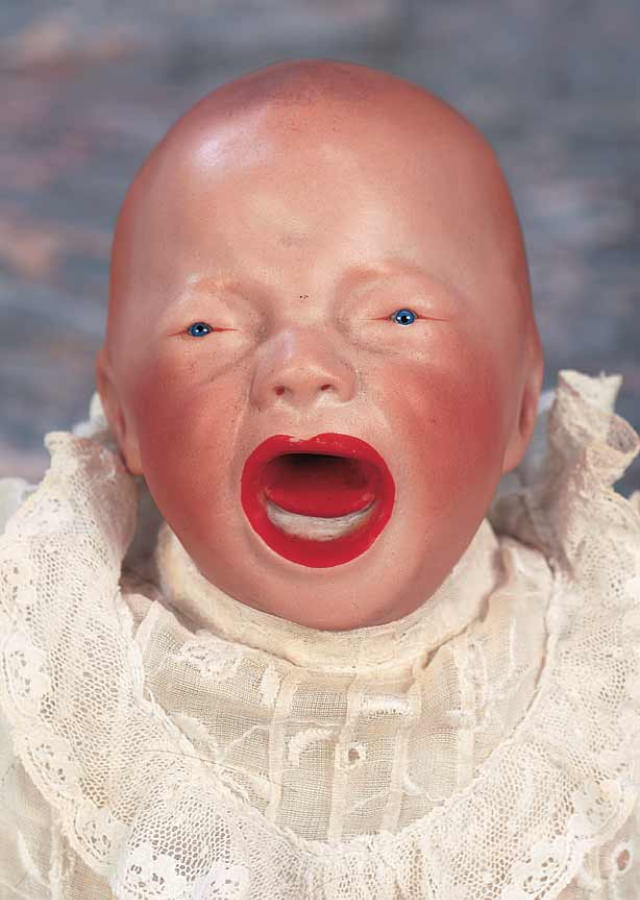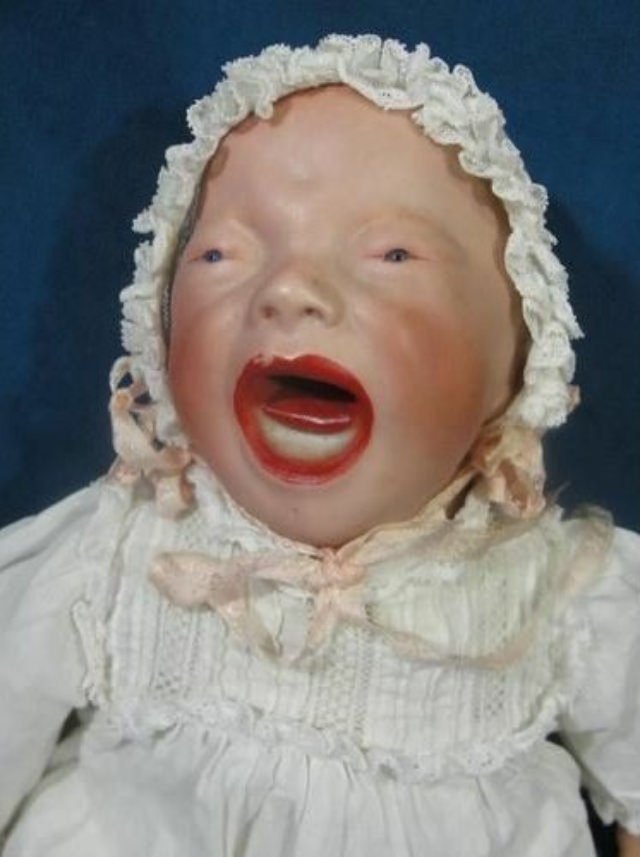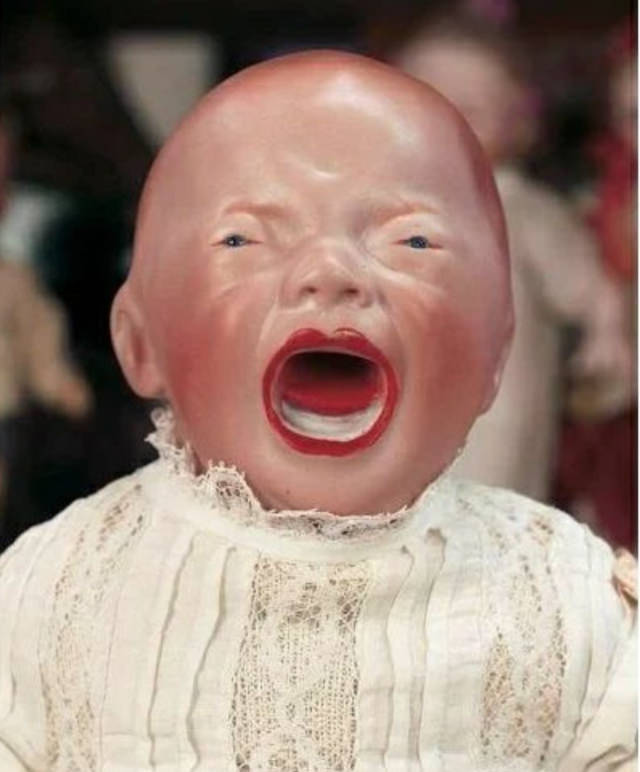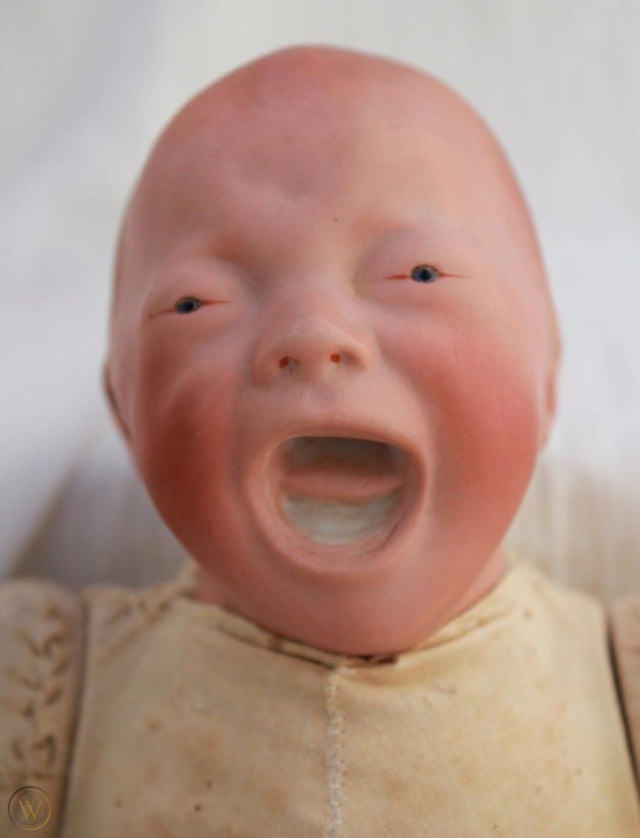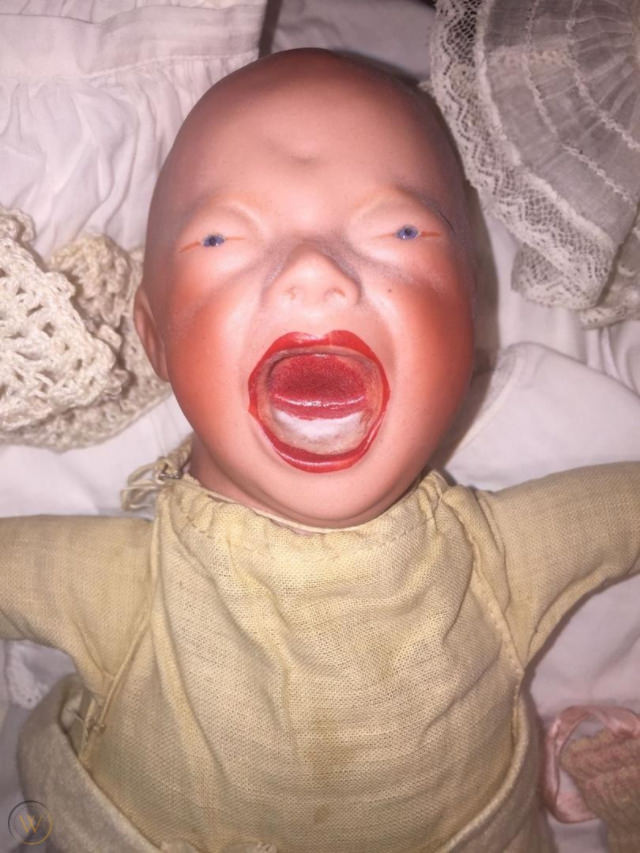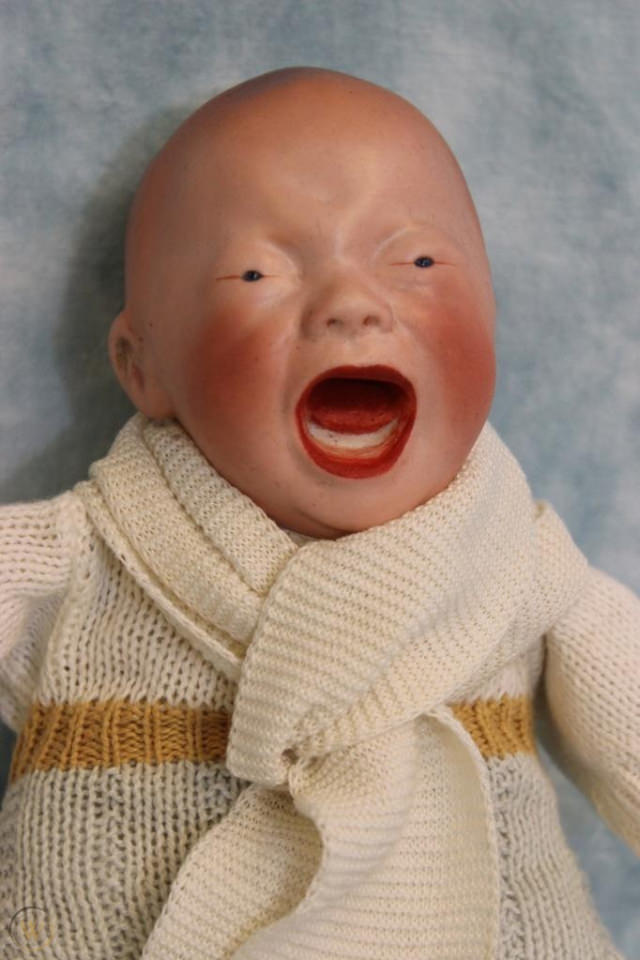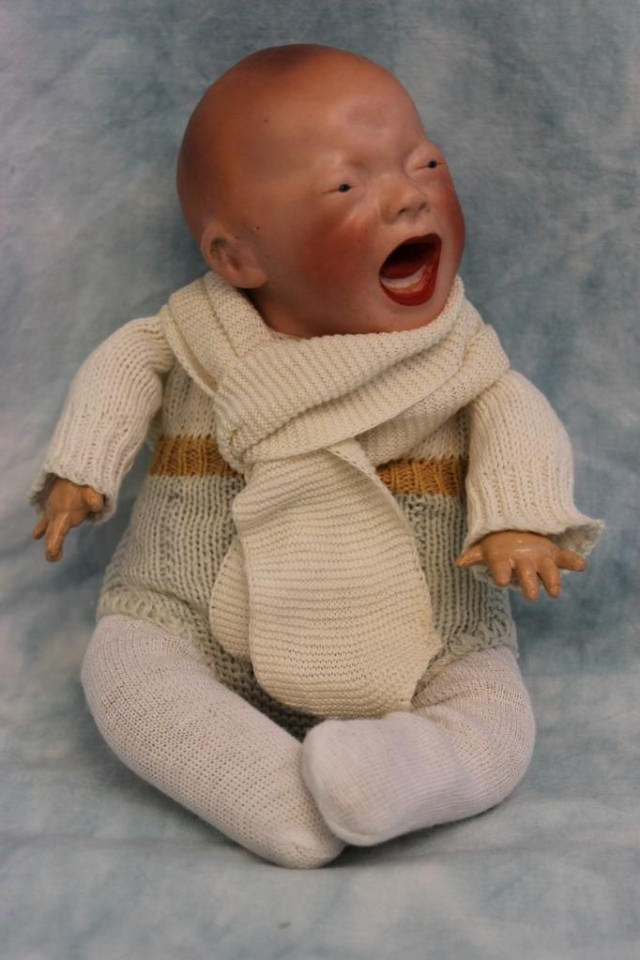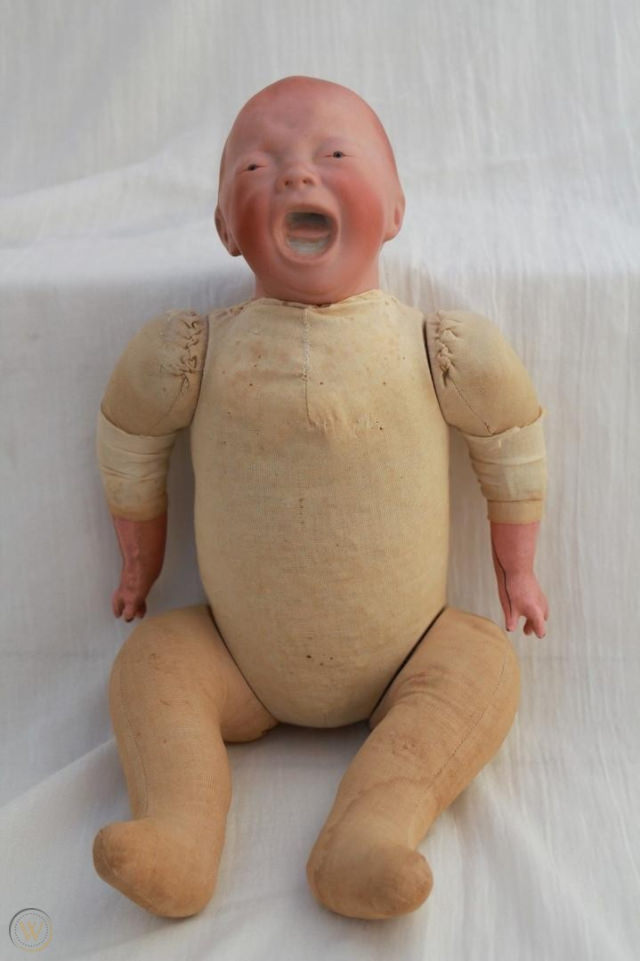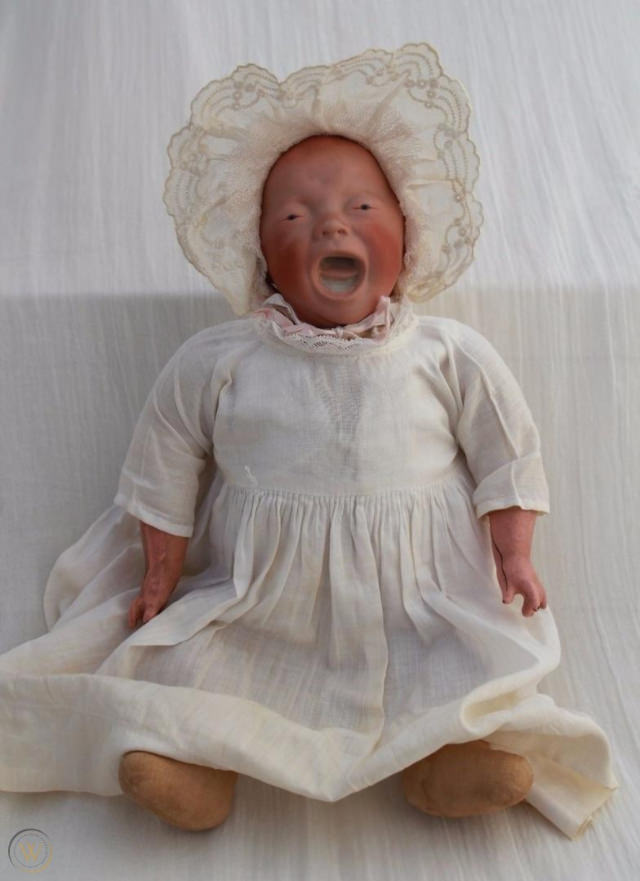In the fascinating world of antique dolls, few names resonate as strongly as Kestner. A German doll-making company, Kestner, became well-known for its high-quality, intricately designed dolls. From the company’s humble beginnings in 1805 to its eventual closure in 1938, Kestner dolls remained popular among collectors worldwide. However, one particular line of dolls remains etched in the annals of doll-making history: the screaming baby dolls from the 1920s.
Founded by Johannes Daniel Kestner, Jr., the company initially made dolls with papier-mâché heads and peg-jointed wooden bodies. As the company’s popularity grew, Kestner expanded his offerings, pioneering the use of porcelain and bisque heads in the 1850s, a time when the German doll-making industry was booming. After Kestner’s death in 1858, his grandson, Adolf Kestner, continued his legacy, taking the company to new heights of innovation and success.
Among the many innovations, Kestner’s unique ‘Dolly Face’ heads stood out. These rounded, slightly double-chinned faces, often featuring an open mouth displaying teeth and inset or sleeping eyes, were a universal favorite. They perfectly captured the charming innocence of a toddler or baby, making these dolls an instant hit. Kestner’s creativity didn’t stop there. The company also produced a variety of other doll heads, some resembling Jumeau dolls’ long faces, others embodying Bru dolls’ chubby square faces, and even others with unique character faces.
However, it was in the 1920s that Kestner truly shook the doll-making industry. He introduced a line of screaming baby dolls made from bisque porcelain that captured the hearts of doll enthusiasts. These dolls, complete with their own clothing and wigs, were created with such a level of detail that they mirrored real-life babies’ looks and expressions. With their open, screaming mouths, these dolls created a sense of realism unseen before.
These dolls weren’t just well-crafted; they also came with an advanced design that allowed natural movement. Kestner developed an expensive leather body with riveted joints, enabling the dolls’ limbs to move naturally. This gave them a lifelike quality that was unmatched at the time.
Kestner dolls became popular worldwide, exported to distant shores including the United States. They were not just toys but cherished collectibles, often found adorning the drawing rooms of Boston’s high society. ‘Lady Betty Modish,’ one of Kestner’s famous dolls from 1902, was especially popular, complete with a satin ball gown, delicate jewelry, and a blond human-hair wig. Accessories for these dolls were extravagant, ranging from tiny decks of playing cards to miniature nail sets made with ivory. Today, these dolls are sought after by collectors worldwide, serving as timeless reminders of a bygone era of extraordinary craftsmanship and design.



